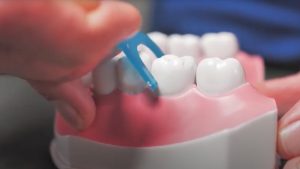Hi, I’m Tom from Toothpaste. Welcome to our guide to root canal therapy.
Understanding Root Canal Treatment
What is root canal treatment? Well, in health, our tooth, underneath the enamel and the dentine, we have the tooth pulp. This is made up of nerves and blood vessels which enter through the tip of the roots.
The Cause and Symptoms of Pulp Inflammation
Now, when a tooth receives any trauma or injury in the form of decay, cracks, grinding, or injuries in sports, this causes inflammation of the nerve of the tooth. That can present to the patient in the form of sensitivity, spontaneous toothaches, or an inability to bite down on the tooth.
Treatment Options and Decisions
If we treat the cause in the form of fillings or crowns, the inflammation will settle down and the nerve will recover. But if the tooth has received just too much of an injury or an insult to recover from, the pulp of the tooth can go on to die. In this situation, if we want to keep the tooth, our only option is a root canal treatment.
The Goal of Root Canal Treatment
The aim of root canal treatment is to remove the infected nerve of the tooth but leave the surrounding tooth structure in place.
The Root Canal Procedure
Before starting the root canal treatment, the patient will be numbed up. Although root canal treatment gets a bit of a bad rap and everyone’s heard some horror stories, we do our best to make sure that you don’t feel anything at all, and I never expect anyone to put up with pain.
Numbing and Isolation of the Tooth
Once numb, often a rubber dam will be placed over the tooth. This is a rubber sheet which stretches over it and isolates the tooth from the rest of the mouth and stops bacteria from getting inside.
Cleaning Out the Infected Nerve
Once the patient is numb and the rubber dam is placed, we can then proceed with the root canal treatment. To do the root canal treatment, we open up the infected tooth and we start to clean out the infected nerve. We use little files to do this and there’s a bit of a rasping sensation.
Procedure Duration
This sounds a little bit easier than it actually is. It’s a very fiddly and delicate procedure. And depending on which tooth in the mouth it is, it can take anything from 45 to 90 minutes per appointment with two appointments expected for the preparation and the filling of the tooth.
Aftercare and Recommendations
Once the root canal treatment is completed, it no longer has a blood supply to it, and so it can become a little bit more brittle and susceptible to fracture as it dries out. So often following root canal treatments, we recommend that the tooth is crowned. A crown will go over the tooth, hold it all together, and protect it far better than a filling will do.
Potential Risks
Finally, it’s really important for me just to mention the potential risks of root canal treatment. Root canal treatments do have about an 85% success rate. There is a risk of failure, and if this occurs, it could result in either the need to be referred to an endodontic specialist, or even in extreme cases, removal of the tooth.
Longevity of Treatment
Even successful root canal treatments with a crown on top of them can potentially only last 12 to 15 years. So even in the best-case scenario, there is the risk that you may still go on to need either re-root treatment in the future or to have a look at potential tooth replacement options if you do end up losing the tooth.
For more information on root canal treatment, have a look at the links below, or if you have any questions, give us a call at the practice or book online today for some more help from our friendly team.







